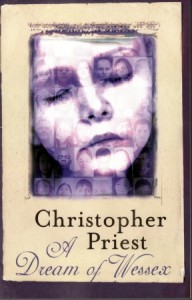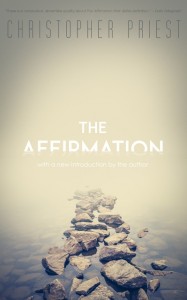This is a public service entry:
Oh, my God. / Cooper, there’s no point using our fuel to – / Just analyse the Endurance’s spin – / What’re you doing?! / Docking. / Endurance rotation is 67, 68 RPM – / Get ready to match it on the retro-thrusters – / It’s not possible – / No. It’s necessary.
When I wrote the blog entry immediately below this one I had been planning to write a review of Christopher Nolan’s new film, Interstellar, which I saw at the end of last week. That idea was hijacked by the sudden arrival of my copies of the Gollancz edition of A Dream of Wessex. Because I was thinking about Nolan I remembered I had always wanted to write about the similarities between that novel and his earlier film, Inception. So I did that instead. (See below.)
Interstellar is a problem, a long, poorly written and second-rate film with a wide popular appeal, so I briefly decided enough was enough. Other people, notably Abigail Nussbaum, have elegantly and convincingly demolished it. No point me adding to Nolan’s woes.
But yesterday there were several stories in the press, on the radio and all over the internet about the sound level of the new film. Many audiences have complained that the music and sound effects are too loud in Interstellar, while the dialogue is too low to be heard and followed. There were stories of people demanding their money back, and a theatre in Rochester NY putting up a sign saying that their sound equipment was not at fault: the film’s soundtrack had been recorded that way. Christopher Nolan himself came forward to confirm this, calling it ‘a carefully considered creative decision’, using the dialogue as a sound effect, to ‘emphasize how loud the surrounding noise is’.
The composer, Hans Zimmer (a highly regarded film composer, and rightly so), is himself totally unapologetic, and says so here. But as writer and director of the film, and someone who presumably oversaw the editing and sound mixing, Christopher Nolan has the greater responsibility.
Anyone knows the reality. The ‘surrounding noise’ of space is silent. Space is a vacuum – it is incapable of carrying sound. How Hans Zimmer’s loud music can be heard in space is a mystery only Nolan can explain.
(An earlier Nolan film, his adaptation of my novel The Prestige, had similar problems with music and dialogue recording. Although overall I admired the film, I have always been concerned with these two crucial weaknesses. Until Nolan came forward today to explain his creative decision, I had assumed the muttered dialogue was a mistake, a consequence of inexperience.)
Returning to Interstellar: By chance I am one of the few people who had no problem with the dialogue of this extremely long film. The version we saw was subtitled ‘for the hard of hearing’, so every word of the script was plain. I can therefore report that much of the dialogue creatively hidden from the audience is similar to the short extract above, and the rest is … not exactly Shakespearean pentameters.
Nolan clearly uses dialogue as a sort of fill-in noise. He calls it a sound effect. For him, words are something he has to get the actors to come out with while they’re performing set-pieces or going through spectacular scenes.
This was particularly true of Inception, which had one of the worst-written scripts I have come across. I winced at its clumsiness several times while watching it – a later look at the shooting script confirmed the clodhopper style was not my imagination. (Christopher Nolan was credited as writer.) Interstellar came from a different source: it was originally written solo by Jonah Nolan for a planned film by Steven Spielberg – that original script was very different from the finished film. Jonah’s original can be read on the internet, where there are several discussion pages about the many differences between the two. As Christopher Nolan is credited as co-author of the final screenplay, we assume that he was responsible for the changes when he took over the project from Spielberg. He has said so himself.
Dialogue is crucial to film: the words given to actors to deliver humanize the story, make it comprehensible to the audience, create characters with whom we can sympathize or at least understand. Nolan’s argument that dialogue is just another sound effect is weak and unconvincing, and is of course an evasion of something much more serious. If the dialogue he has written consists of people mumbling to themselves, or shouting about retro-thrusters over the noise in space, then maybe he is writing the wrong kind of dialogue in the wrong kind of film.

